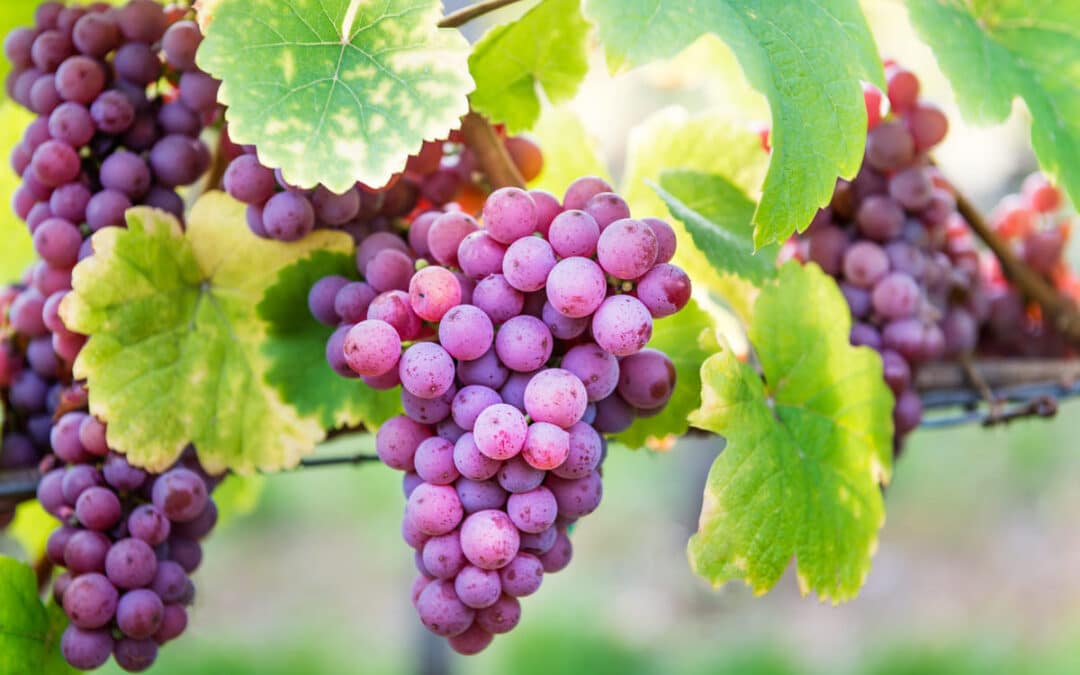By late July, grapes in Napa vineyards undergo an important change known as “veraison,” a French term for the natural transition from growing to ripening. The grapes at this stage have nearly reached their mature size and are beginning to turn from green to red. The process may last for a few weeks depending on the variety as well as temperature, elevation, and other environmental conditions.
Following this transformation, the grapes will continue to develop for another two months or more before harvest at full maturity.
Transformation of the Grapes During the Veraison Stage
Besides the color change, the grapes also begin losing acidity while increasing sugar levels. This color and sweetness phenomenon occurs as stored energy flows from the vine roots to the ripening grapes.
During the process, the green-producing chlorophyll is replaced by anthocyanins in red varieties, turning the grapes to shades of purple while developing the glucose, fructose, and the variety’s typical aromatic properties that produce great tasing wines.
Just before and after the veraison state, growers will “drop fruit” or thin the clusters to ensure a higher quality, less watery harvest at season’s end. High yields and oversized clusters can dilute the strength of flavor, resulting in wines that are watery and thin-flavored.
And, as veraison nears completion, growers may also perform a “green drop” that requires eliminating those clusters that have fallen behind and retained their green color after the majority have turned. Ideally, all remaining grapes are uniform in color and ripeness by harvest time.
Once the remaining grapes have achieved full veraison, vineyard managers monitor watering carefully to ensure the fruit does not absorb too much and become too plump and saturated. This condition can impact the resulting wine quality as well.
The onset of veraison also prompts the need for viticulturists to trim vines and be alert to the emergence of pests.
Varaison and Wineries in Napa CA
The veraison process is critical to the development of the highest quality wines from Napa vineyards. During this stage, vineyard managers will glean the slower developing clusters to leave uniform, high-quality grapes for wine production. Thin, watery, or inconsistent wines can be a sign that growers have left too many clusters on the vines for harvest, not allowing the desired attributes to develop all grapes.
Achieving the highest output or yield of grapes from each vineyard is not the objective of the best vineyard managers. Instead, the best wineries in Napa CA are looking for vibrant, flavorful, and consistent qualities in all the grapes they process.
In fact, the yield from Napa vineyards happens to be about 50% of the yields reported by the rest of California’s vineyards. This commitment to using only the best grapes has made the wineries in Napa CA renowned quality leaders in wine production.
Hill Family Estate
One of the top wineries in the Napa, CA region is Hill Family Estate of Yountville. By combining the decades of growing experience of the family patriarch, Doug Hill, with the award-winning wine making skills of Alison Doran, Hill Family Estate enjoys a coordinated and seamless linkage between growing and wine making.
Hill Family Estate draws the best grapes from multiple Napa vineyards to create uniform, high-quality wines each year.
Check out the Hill Family Estate offerings online, or visit our Tasting Room in Yountville.

